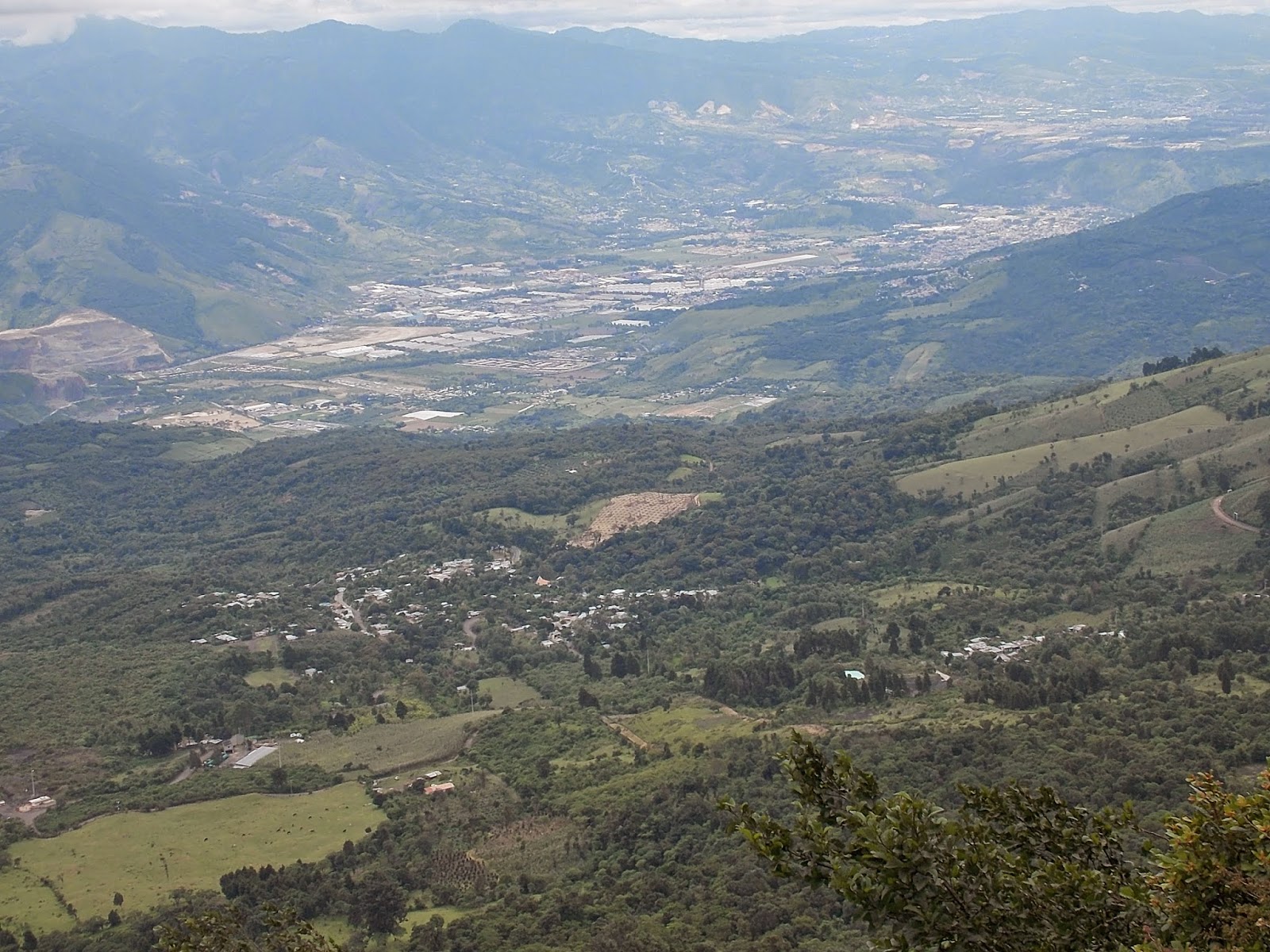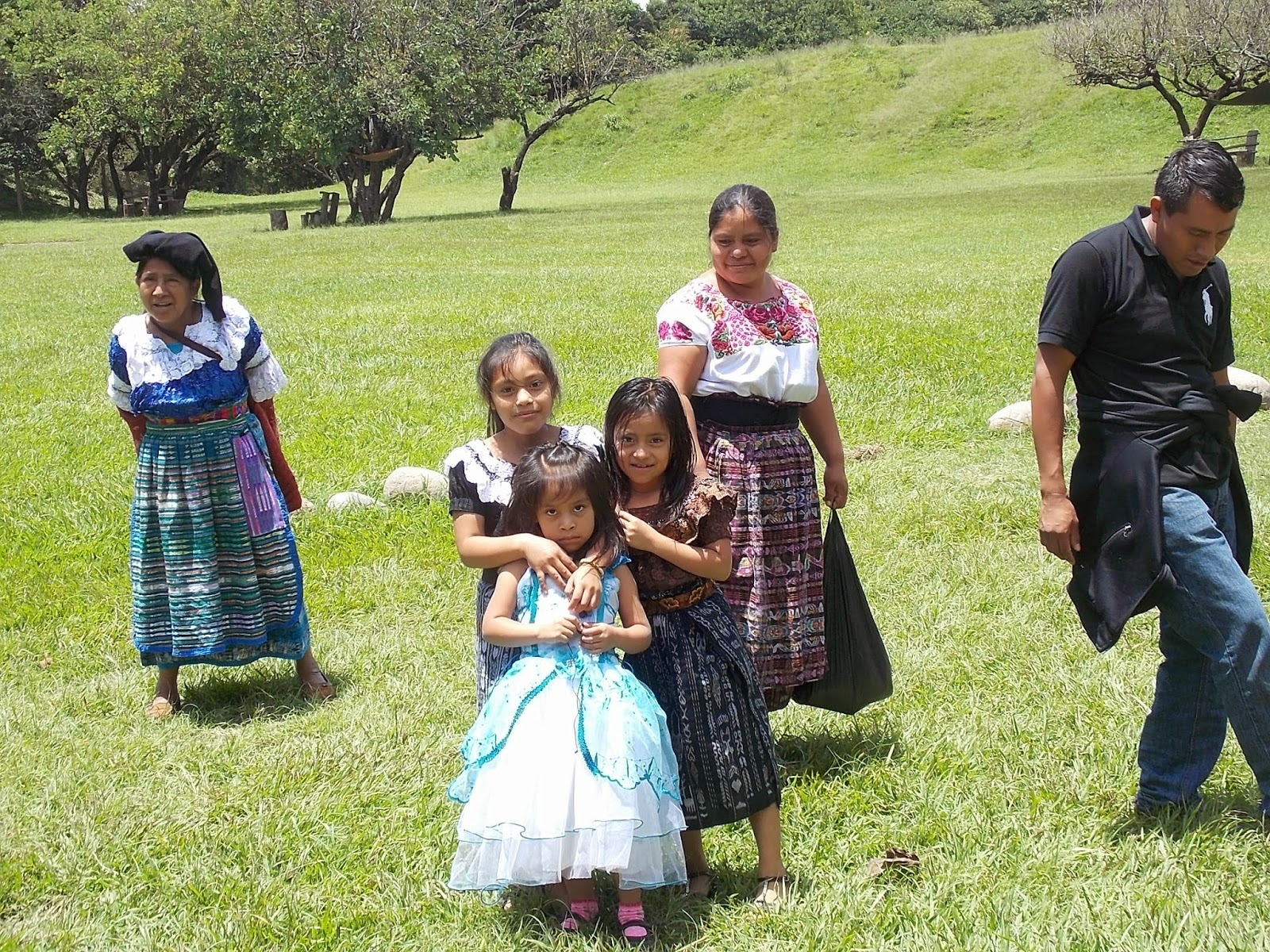This is the start of it. A small village at the base of Pacaya. These people live off of the tourists that come to risk the threat of molten lava for a good hike. These young boys sell you a hiking stick for Q.5 (about 65 cents) A really small price for a useful tool!
 Look closely at the pommel on the saddle. It is hand carved wood. I think the rest of the saddle is hand made too!
Look closely at the pommel on the saddle. It is hand carved wood. I think the rest of the saddle is hand made too! As we move up the mountain, you can look down and see this geothermal plant that sucks the heat out of the volcano, turns it into electricity.
As we move up the mountain, you can look down and see this geothermal plant that sucks the heat out of the volcano, turns it into electricity.I the distance you can 3 other active volcanos, Fuego, Agua and something-Tenengo.
 Many of the horsemen followed us up the mountain, but by now they realized that Cathy is the only taker and they returned to the bottom if the mountain in search of other fares.
Many of the horsemen followed us up the mountain, but by now they realized that Cathy is the only taker and they returned to the bottom if the mountain in search of other fares.This is one of the village women that has climbed the mountain to gather wood to cook with and she carries it on her head down to her home.
This is looking down on the lava flow that occurred last March. The dark lava is the new flow and you can see how it came down the hill!

This is enterprise. It's is a jewelry store that sells various hand made items that each have a little lava in them. This is what you call a difficult commute to work.
Looking downhill you can see Lago Amatilan.
I telephoto'd this to show an orchard on the side of a very high hill which is well below us.
 Here we cross the lava flow in the bowl below the peak. It looks like plowed dirt but it is very hard and sharp.
Here we cross the lava flow in the bowl below the peak. It looks like plowed dirt but it is very hard and sharp. You can't see it well but I am holding a Snickers bar that an enterprising Guatemalan carried up the mountain and sold to me for Q.15
You can't see it well but I am holding a Snickers bar that an enterprising Guatemalan carried up the mountain and sold to me for Q.15 That's right! we roasted marsh mellows over the still warm lava,by finding a hole in the crust and sticking white treat down under.
That's right! we roasted marsh mellows over the still warm lava,by finding a hole in the crust and sticking white treat down under.This is the best and closest picture I got of the peak from about 1000 ft. from the top. The notch you see at the top acts like the groove in a ladle to pour the lava down the mountain.
 Here is our group as we climb out of the bowl and it is as steep as it looks. We had to get back up to top of the bowl to begin our "decent"
Here is our group as we climb out of the bowl and it is as steep as it looks. We had to get back up to top of the bowl to begin our "decent"By now I'm tired,so just enjoy the views.





















































